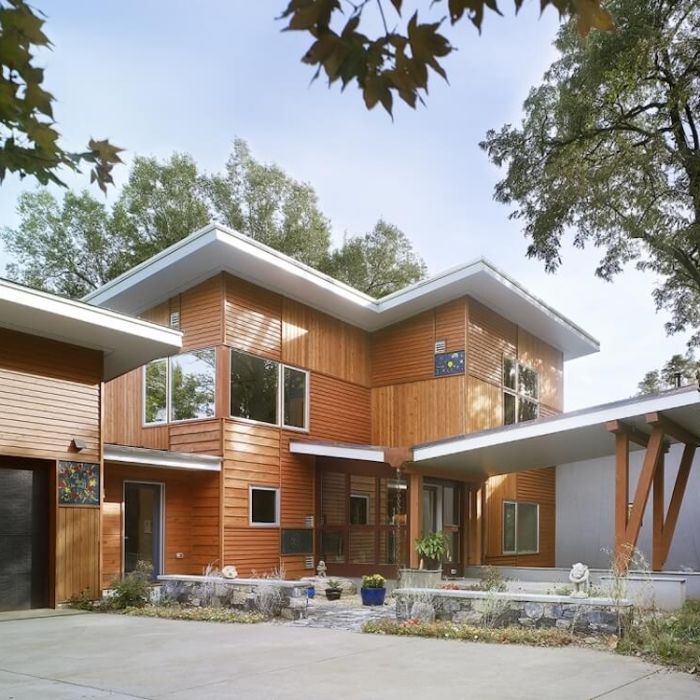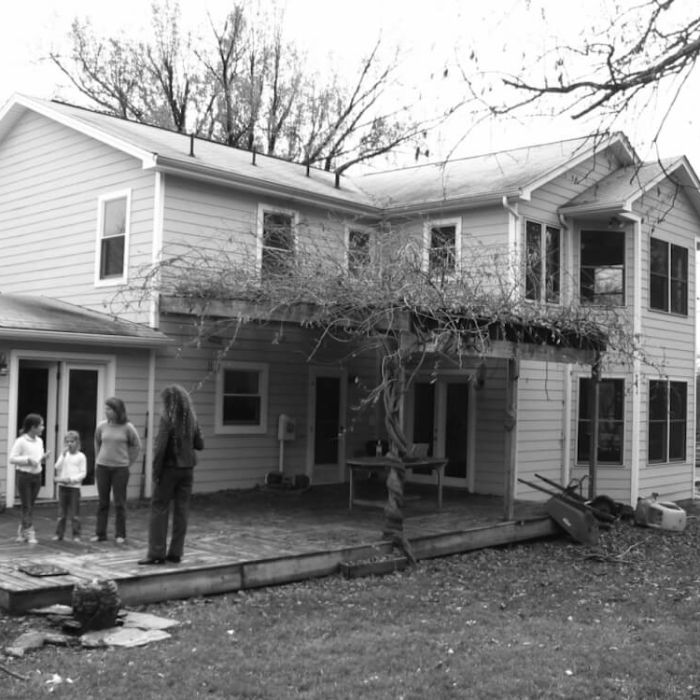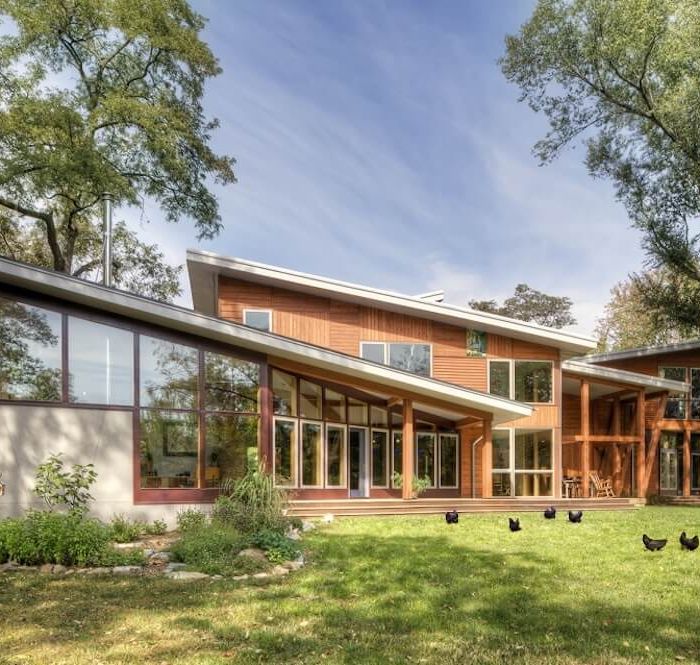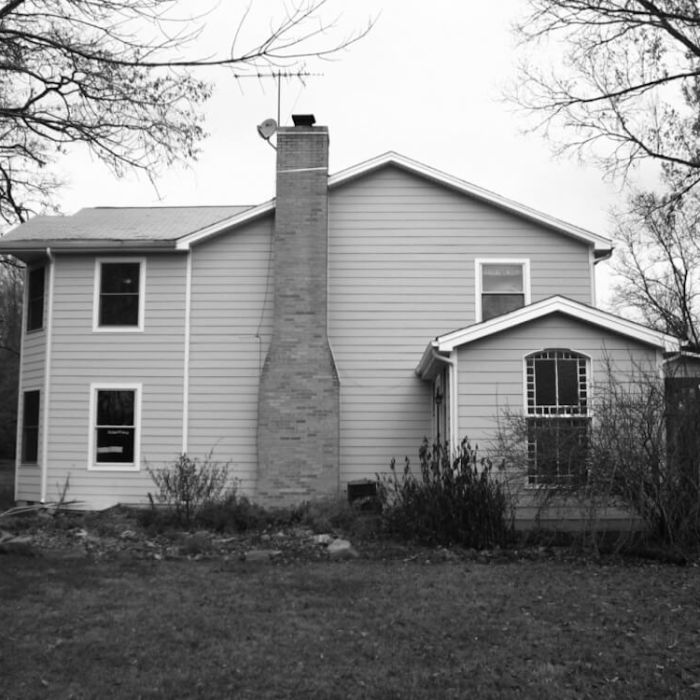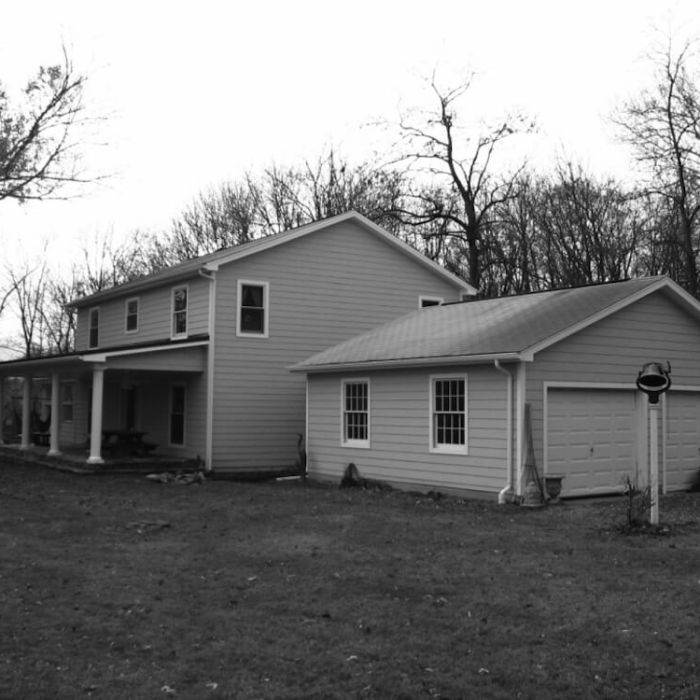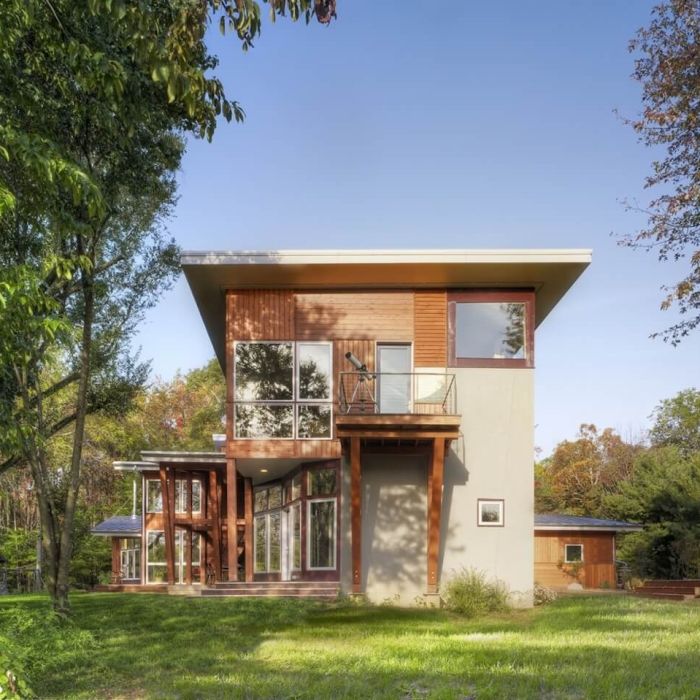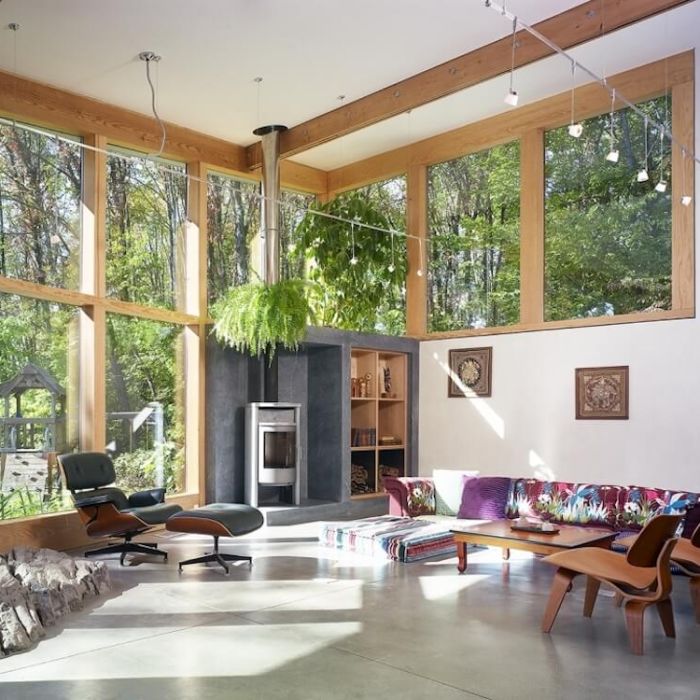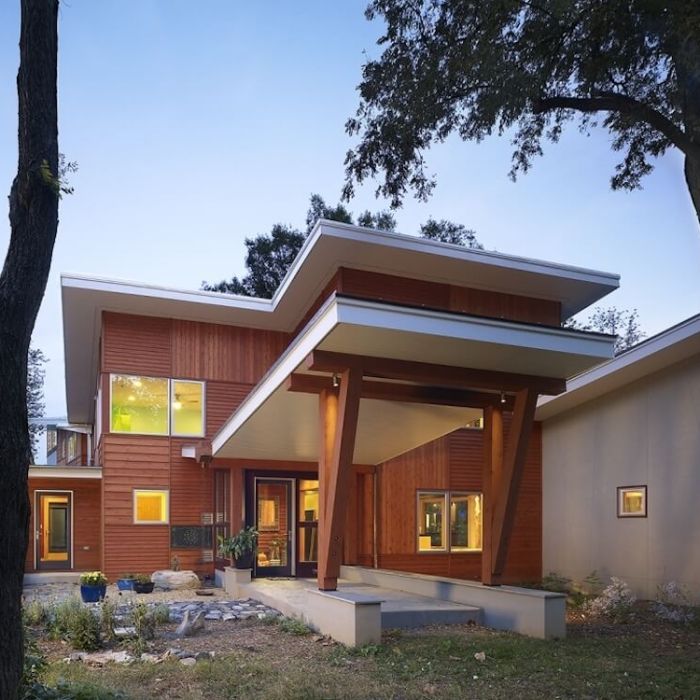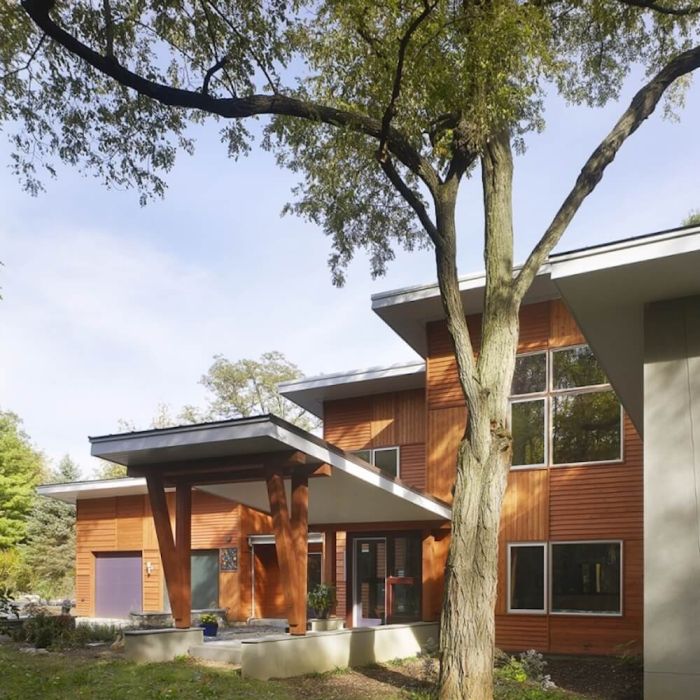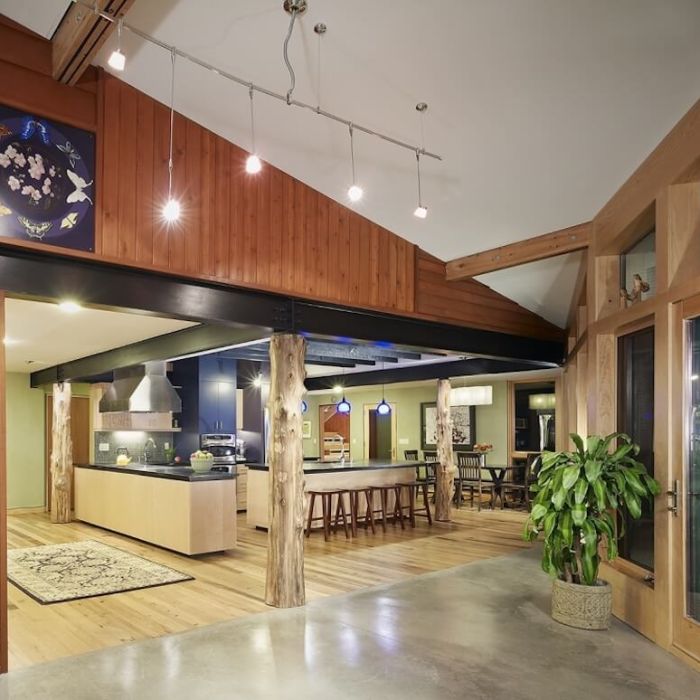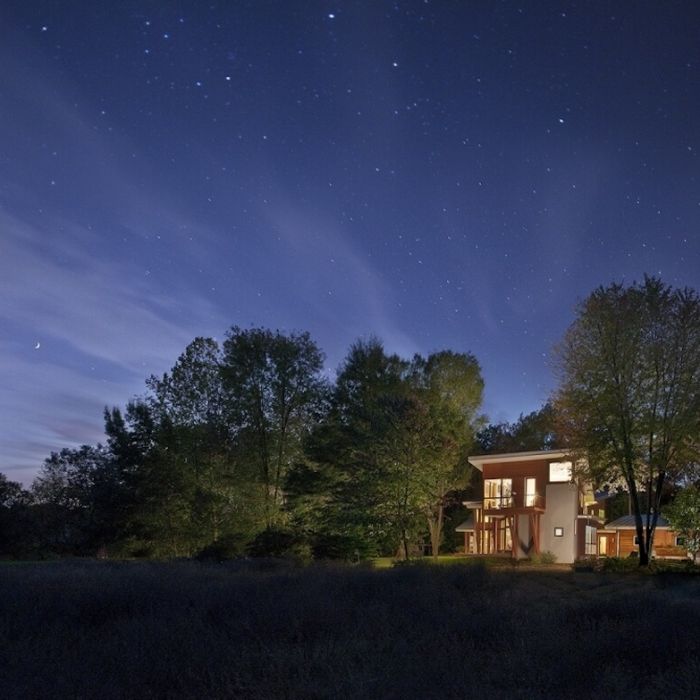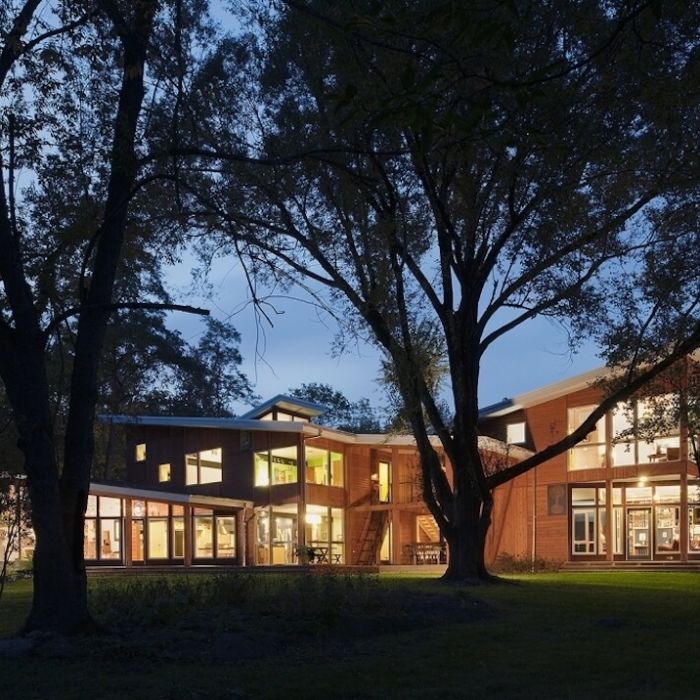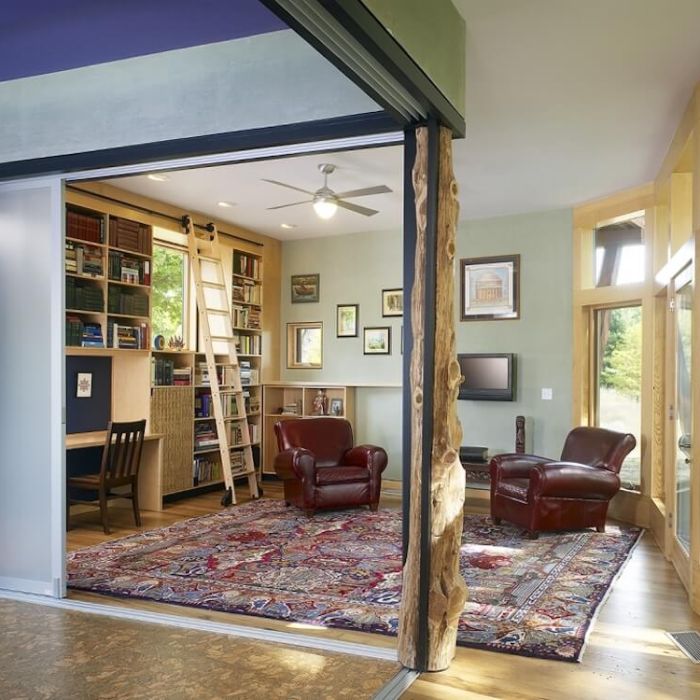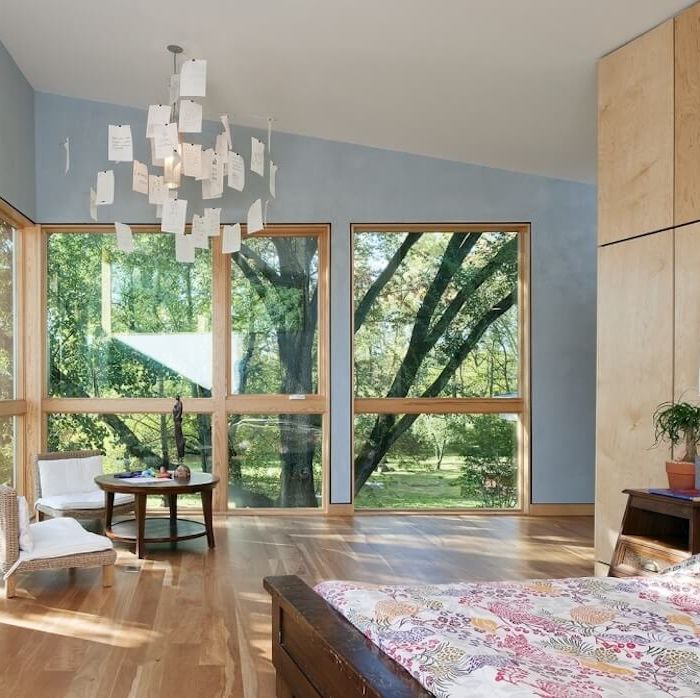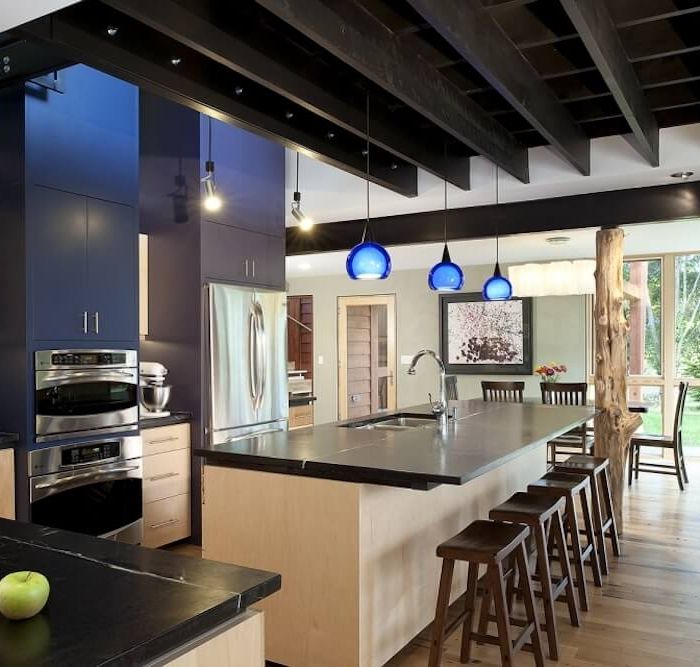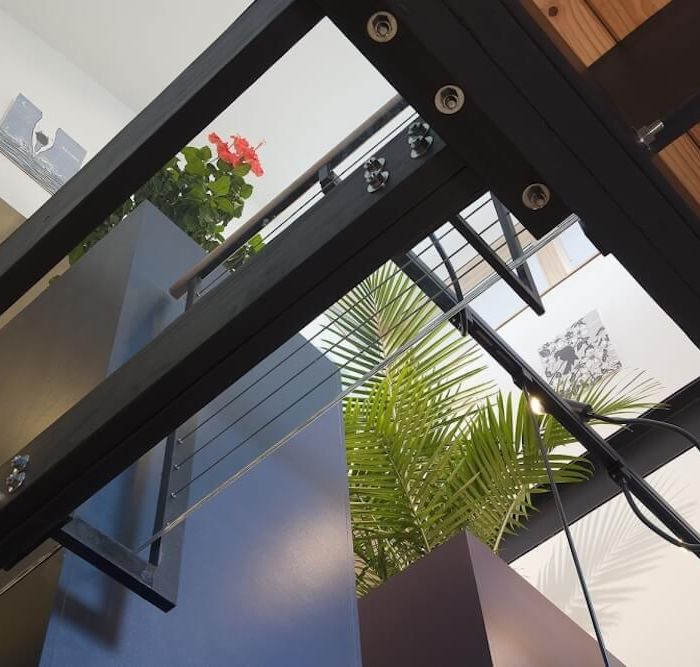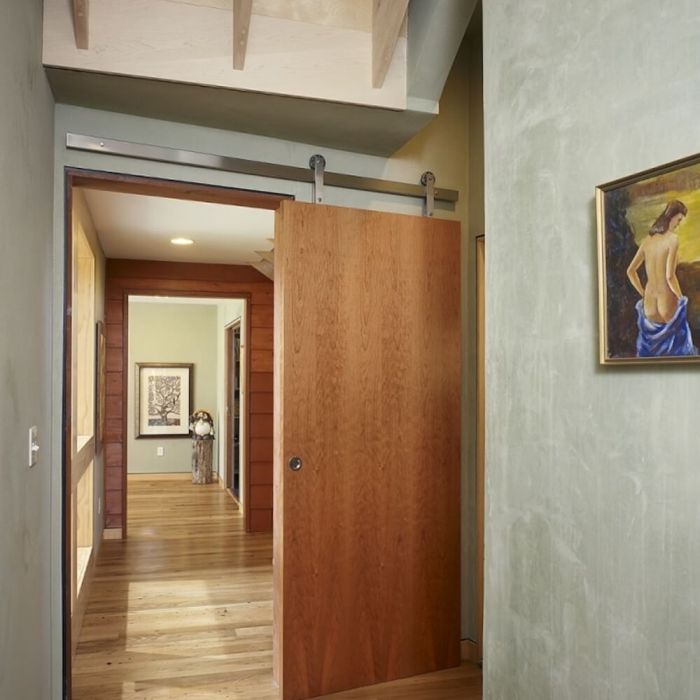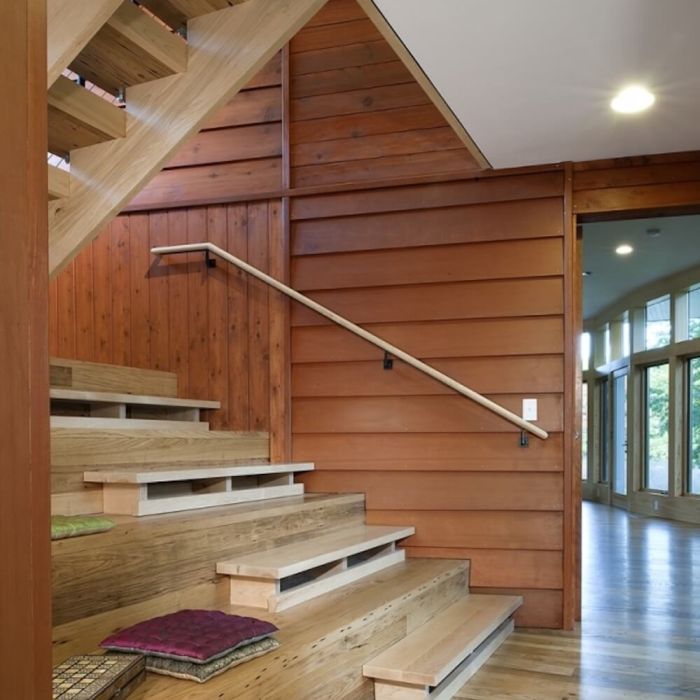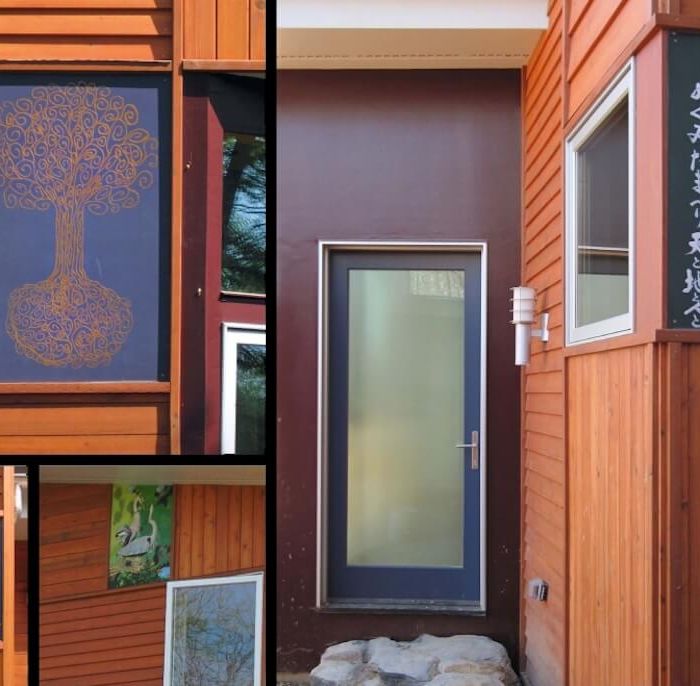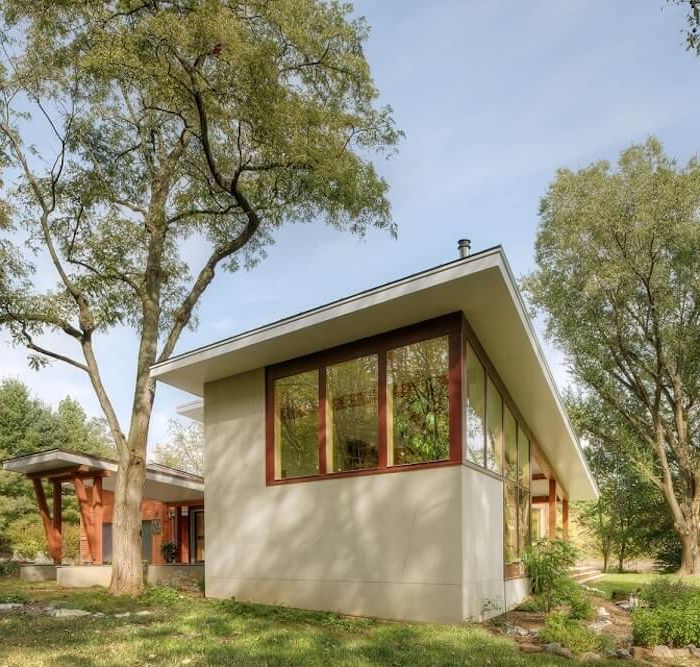SONGBIRD LANE
FREDERICK COUNTY, VIRGINIA
This house was originally a two-story, nondescript, 1970’s “farmhouse” with no architectural merit, clad in baby blue vinyl siding. The house had mold problems, and, consequently, its inhabitants had respiratory issues. Despite its pedestrian character and inadequate size, the house did have one thing going for it—it sat on the right place on its site, within a ring of mature trees. Because of its siting, and because the owners were concerned about conserving natural resources, a decision was made not to tear down and relocate the house. Instead, the design parti was to keep the box of the original house as the central core, add two wings which help make outdoor spaces and optimize the sun path and rethink the building massing.
The core of the existing house was used for the kitchen, service spaces, and children’s bedrooms. Because the existing house had typical eight foot high ceilings, we opened up the second floor above the kitchen. This new opening connects the centrally located kitchen to the children’s areas above and drops daylight into the center of the house. One new wing is an open living room, connected to the kitchen and outdoors. The other new wing is dedicated to more private rooms, including the master suite, yoga room, and library.
Building materials used in the project express the owners’ earthy aesthetic and environmentally conscious philosophy. Found boulders are placed as sculptural objects, both within the house and in the landscape. Cedar tree trunks were used structurally in the kitchen and yoga room. The building is skinned in cedar siding, arranged in horizontal and vertical patterns and punctuated by art panels.
Every building material was scrutinized, to minimize the project’s negative impact on both the environment and the health of the owners. Environmentally conscious strategies are listed below:
– Building orientation for passive solar gain.
– Re-use of existing building foundation / framing.
– High efficiency fixtures and fittings (low-flow faucets, dual-flush toilets).
– Construction waste management (construction debris sorted and recycled).
– High performance, non-toxic building insulation package.
– High performance windows and glazing.
– High efficiency appliances, including induction cooktop.
– High efficiency HVAC, including ground-loop geothermal, radiant floor tubing, and on-demand tank-less domestic hot water.
– Environmentally preferable products (low-VOC, non-urea-formaldehyde).
– 100% recycled gypsum wall board.
– Approximately 1500 s.f. reclaimed wormy chestnut flooring.
– FSC-certified millwork utilizing water-based adhesives and sealants.
– Renewable resource products: cork flooring, linoleum flooring, concrete counter tops, concrete flooring.
– Local sourcing: local black locust exterior decking material, harvested using Carbon Positive Forestry (horse-drawn extraction); local cherry and maple interior hardwood flooring, harvested observing the standards of Sustainable Forestry Management.
– American Clay Venetian plaster interior finishes.
– All low-VOC or no-VOC stains and sealants.
– High fly-ash concrete flooring.
– Non-toxic pest control methods.
– Landscape plantings of native species.
PROJECT CREDITS
- Builder: R.L. Hayes Enterprises, LLC; Berryville, VA, and M.T. Puskar; Flint Hill, VA
- Structural Engineer: Painter-Lewis, P.L.C., Winchester, VA
- Mechanical Engineer: Comfort Design, Inc., Winchester, VA
- Landscape Architect: Siteworks, Charlottesville, VA
- Millwork: Dovetail Millwork, Flint Hill, VA
- Photography: Hoachlander Davis Photography, LLC, Washington, DC
PUBLICATIONS
- Design Bureau magazine, Issue 10, March / April, 2012
- 21st Century Homes; Innovative Designs by North America’s Leading Architects, published by Panache Partners, LLC, 2011
- Architecture Leaders Today, Volume II, Spring 2011
- Remodeling Magazine, February 2011
